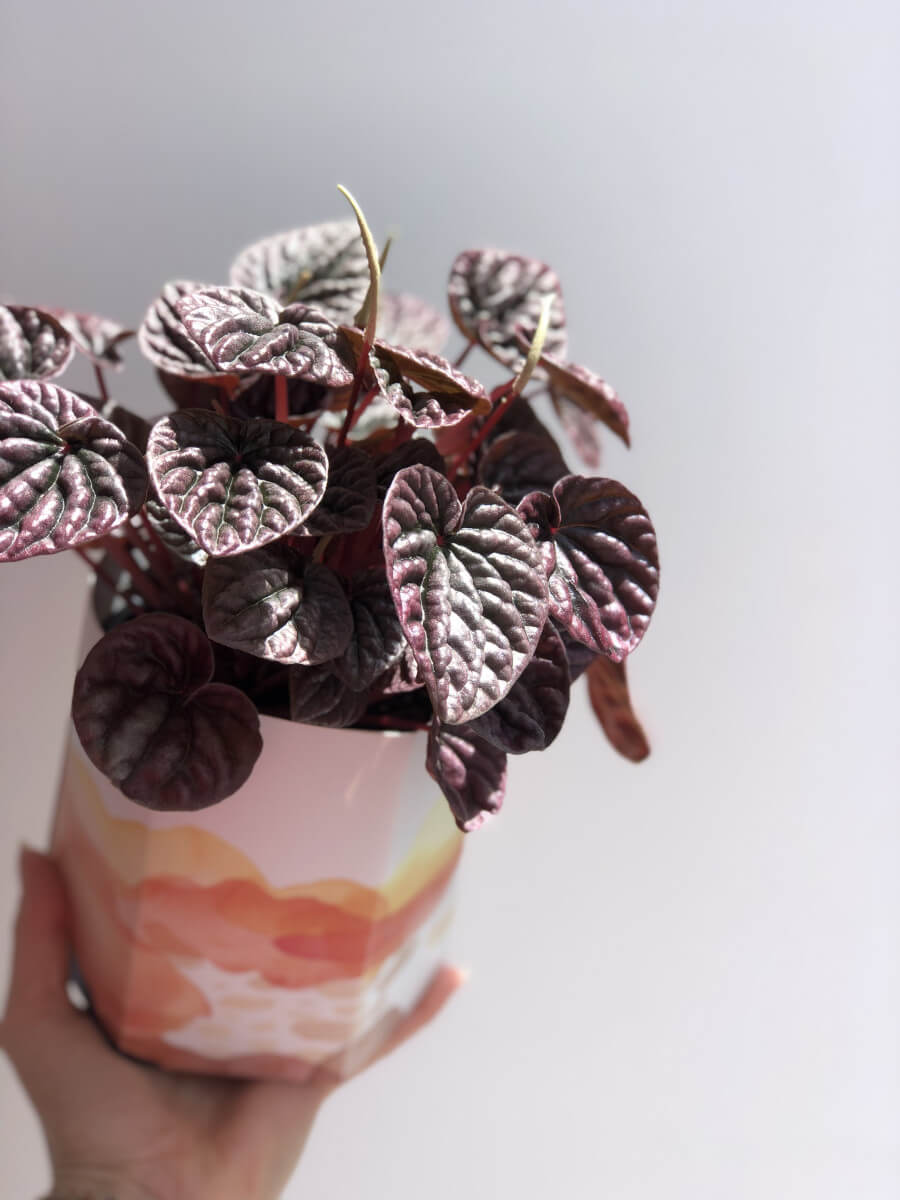With over more than 1,000 known species, you could fill a room and have no two plants that are the same, that's CRAZY! Peperomia's come in huge range of beautiful colours and sizes. Peperomia leaves can come in green, grey, red, purple, variegated and marbled colouring. Peperomia are originally from subtropical and tropical regions of the world. Peperomia are also known as a baby rubber plant. Ideal for indoor spaces most Peperomia only grow to be thirty centimetres and rarely need to be repotted. Peperomia love a home with bright, indirect light. As naturally slow-growing plants Peperomia can be replanted year-round and tend to be a very low maintenance plant. Although low maintenance they can still develop damage with the wrong care. Watering! Although a must is the most common cause of damage to these beautiful babies! Too little or too much can cause some serious damage. So, let's go through some easy signs to spot to keep your Peperomia healthy.

Common signs of overwatering
- Wilting
- Yellowing
- Mould developing on the top of the soil
- Rotting stalks that collapse
These are all symptoms of root rot. As a plant parent we definitely want to avoid these damages to your Peperomia. Using a well-draining soil can make a huge difference to prevent the roots from sitting in unwanted water. If you have overwatered your peperomia it is best to repot the plant into fresh soil and allow it to dry out. Hardly watering? but still getting signs of over watering. It might be worth relocating your Peperomia to a home with more light. With more light the water will intake more water.

Under Watering
Common signs of under watering
- Wilting
- Little to no new growth
- Washed out colouring
- Very dry soil
There are all symptoms of under watering. Peperomia's can survive some neglect but not complete neglect. These beautiful plants are known for their slow growth so are happy to dry out but do still need water to intake needed nutrients from the soil to create new growth. To help a Peperomia bounce back from under watering cutting back all damaged foliage and giving it some plant food can be super helpful. You can feed your babies in a few different ways. You could add some nutrients to the soil either through natural composts or slow release fertilisers. Another great way of feeding Peperomias is will liquid food. If you think the soil is lacking nutrients a great nutrient boost is the House plant Mist'n'Feed by Gro-Sure.
Giving the beautiful Peperomia the correct watering can help it thrive in your home! Hopefully these tips have made you feel confident to get your very own Peperomia.

